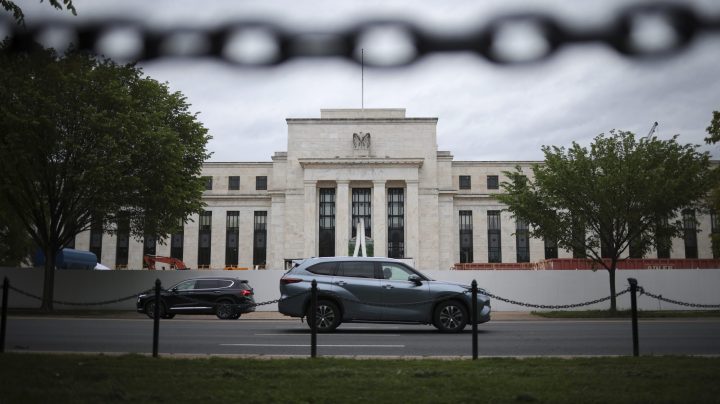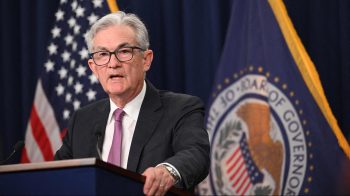
Federal Reserve raises key rate for 11th time by a quarter-point, to highest level since 2001
Share Now on:
Federal Reserve raises key rate for 11th time by a quarter-point, to highest level since 2001

The Federal Reserve raised its key interest rate Wednesday for the 11th time in 17 months, a streak of hikes that are intended to curb inflation but that also carry the risk of going too far and triggering a recession.
The move lifted the Fed’s benchmark short-term rate from roughly 5.1% to 5.3% — its highest level since 2001. Coming on top of its previous rate hikes, the Fed’s latest move could lead to further increases in the costs of mortgages, auto loans, credit cards and business borrowing.
Though inflation has eased to its slowest pace in two years, Wednesday’s hike reflects the concern of Fed officials that the economy is still growing too fast for inflation to fall back to their 2% target. With consumer confidence reaching its highest level in two years, Americans keep spending — crowding airplanes, traveling overseas and flocking to concerts and movie theaters. Most crucially, businesses keep hiring, with the unemployment rate still near half-century lows.
In a statement, the Fed said the economy “has been expanding at a moderate pace,” a slight upgrade from its assessment in June. It’s a sign that it sees the economy as slightly healthier than it was just last month.
A key question swirling around the Fed is whether Wednesday’s increase will be its last or whether it will hike again later this year.
Some Fed officials have said they worry that the still-brisk pace of job growth will lead workers to demand higher pay to make up for two years of inflationary prices. Sharp wage gains can perpetuate inflation if companies respond by raising prices for their customers.
The steady easing of inflation pressures has lifted hopes that the Fed can pull off a difficult “soft landing,” in which its rate hikes would continue to cool inflation without sending the economy tumbling into a painful recession.
Economists at Goldman Sachs have downgraded the likelihood of recession to just 20%, from 35% earlier this year. Those at Deutsche Bank, among the first large banks to forecast a recession, have also been encouraged by the economy’s direction, though they still expect a downturn later this year.
Matthew Luzzetti, Deutsche Bank’s chief U.S. economist, has pointed to durable consumer spending as a key driver of growth. Many Americans still have savings stemming from the pandemic, when the government distributed stimulus checks and people saved by spending less on travel, restaurants and entertainment.
Hiring has remained healthy, with employers having added 209,000 jobs in June, with the jobless rate reaching an ultra-low 3.6%. That’s about where it was when the Fed began raising rates in March 2022 — a sign of economic resilience that almost no one had foreseen.
Year-over-year inflation in June was 3%, according to the government, down sharply from a peak of 9.1% in June 2022. One cautionary note is that an inflation measure preferred by the Fed, which excludes volatile food and energy costs, was still up 4.6% in May from a year earlier.
Some Fed officials, including Christopher Waller, an outspoken member of its Board of Governors, and Lorie Logan, president of the Federal Reserve Bank of Dallas, have said they think the cumulative effects of the previous rate hikes have already been baked into the economy. With inflation still above the Fed’s target, they think additional hikes may be needed to further slow price pressures.
When the Fed’s policymakers last met in June, they signaled that they expected to raise rates twice more. By the time they meet again Sept. 19-20, they will have much more economic data in hand: Two more inflation reports, two reports on hiring and unemployment and updated figures on consumer spending and wages. Some economists think the Fed might decide to forgo a rate increase in September before weighing a possible hike at its meeting in November.
For the Fed, the drop in inflation from roughly 9% to 3% was the relatively easy part, some analysts say. Getting it down to the Fed’s 2% target will be harder and take longer.
Other experts say they think the recent mild inflation readings can be sustained. Rental cost increases, which have already fallen, should drop further as more apartment buildings are completed.
Though the Fed began tightening credit before central banks in many other developed countries did, most others are now following suit. The European Central Bank is expected to announce its own quarter-point rate hike on Thursday. Though inflation has declined in the 20 countries that use the euro, it remains higher there than in the United States.
The Bank of Japan is expected to keep its policies unchanged when it meets next week even though prices there are creeping higher after roughly two decades of declining prices. The Bank of England has been among the most aggressive in Europe, having raised its key rate last month by a half-point to a 15-year high of 5%. Year-over-year inflation in the U.K. reached a painful 8.7% in May.
On Friday, the U.S. government will release fresh data on consumer spending in June and an update on the Fed’s preferred inflation gauge. The inflation measure is expected to slow to just 3% compared with a year earlier. That would match the figure most recently reported in the government’s better-known consumer price index. And it would be down sharply from a 3.8% year-over-year increase in May.
There’s a lot happening in the world. Through it all, Marketplace is here for you.
You rely on Marketplace to break down the world’s events and tell you how it affects you in a fact-based, approachable way. We rely on your financial support to keep making that possible.
Your donation today powers the independent journalism that you rely on. For just $5/month, you can help sustain Marketplace so we can keep reporting on the things that matter to you.


















